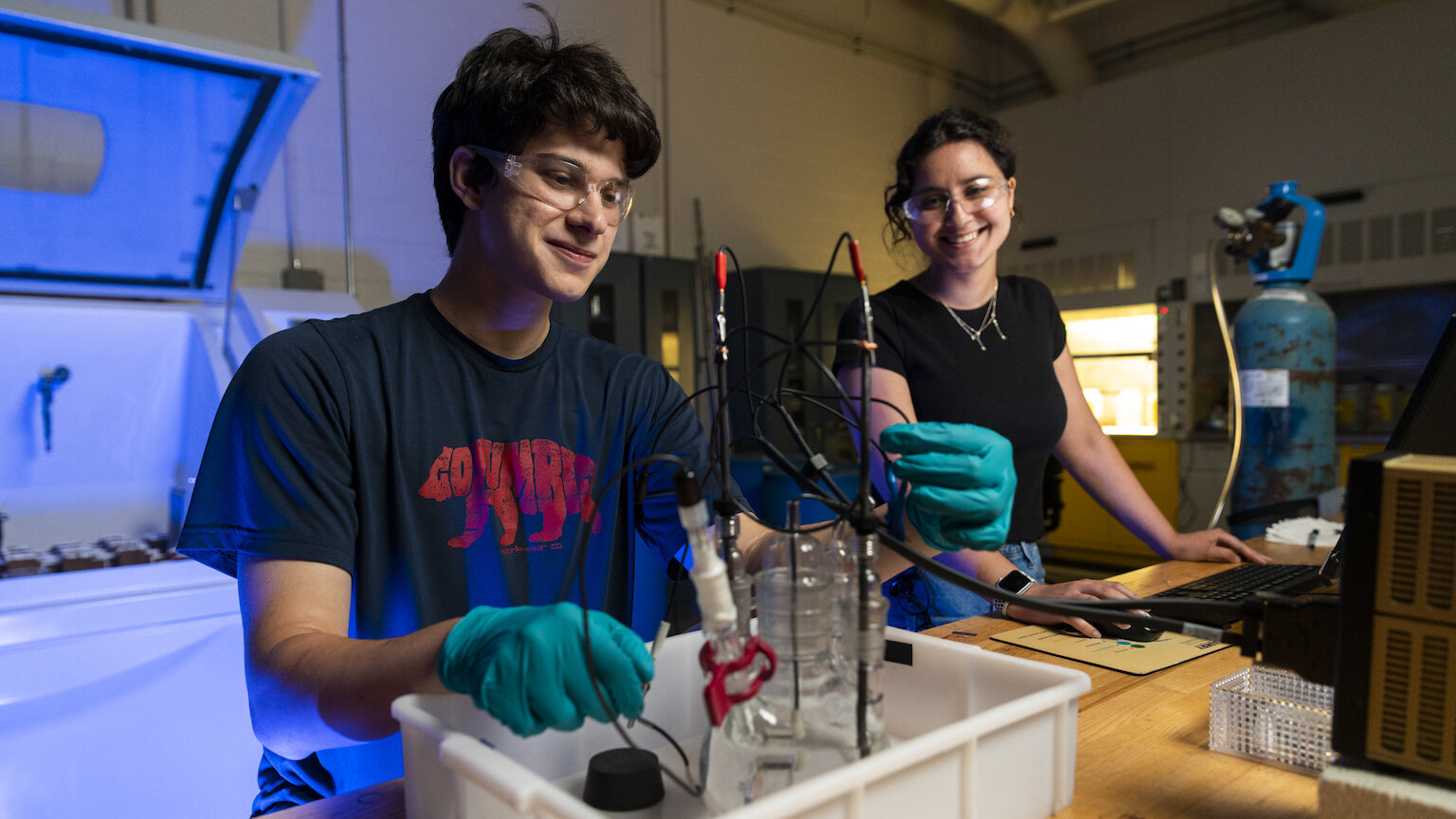
If there is a need for materials, there’s a need for materials engineers.
McMaster University has one of the few materials engineering programs in Canada despite a massive shortage in graduates to meet the demands of industry. In the Faculty of Engineering, innovative work is underway to develop sustainable steel production, push the frontiers of microscopy techniques and technology, create new biomaterials and harness the power of AI to solve materials creation and characterization challenges.
To inspire the next generation of materials engineers to pursue a critical field of study, Materials Science and Engineering Department Chair Hatem Zurob and Assistant Professor Bryan Lee in collaboration with ASM Materials Camp Canada, spearheaded the inaugural Materials Olympics.
Twenty-three teams of high school students from across Ontario traveled to McMaster’s campus on February 22 for four competitions through which they put their skills to the test using McMaster’s cutting-edge equipment all while gaining exposure to the multifaceted field of materials engineering.
The competitions
For a DomesDay challenge, teams brought domes they’d been constructing throughout the 2023 academic year at their high schools to try to stand the strength of a mechanical device used to crush them. Teams used materials like steel, wood and polylactic acid.
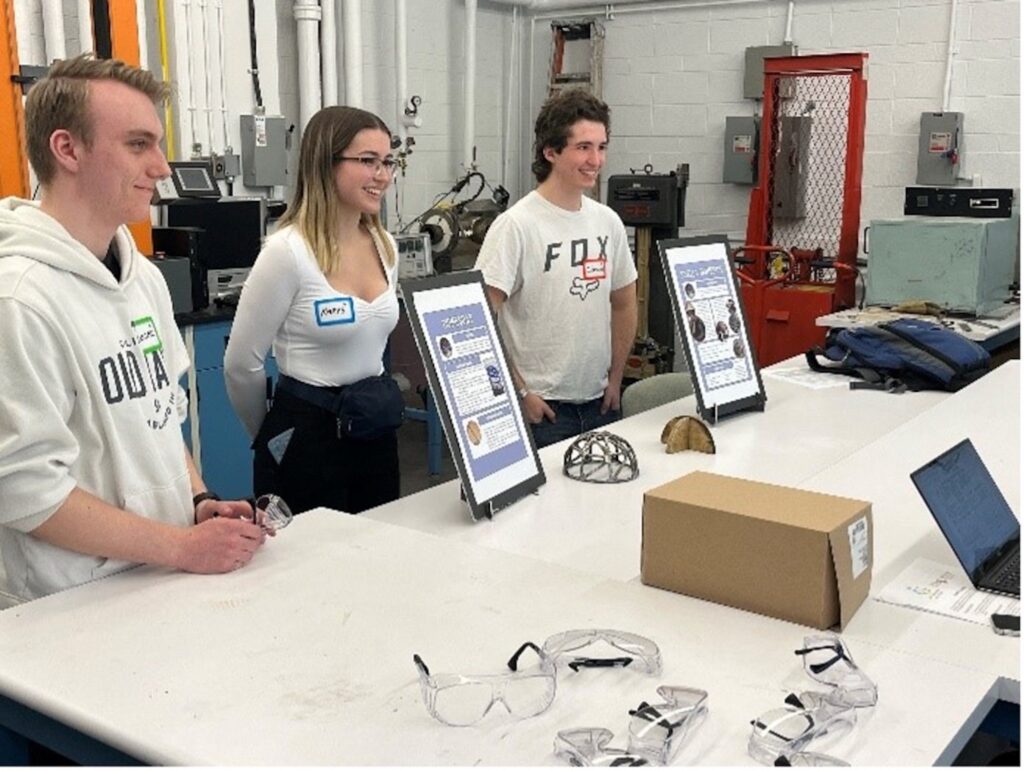
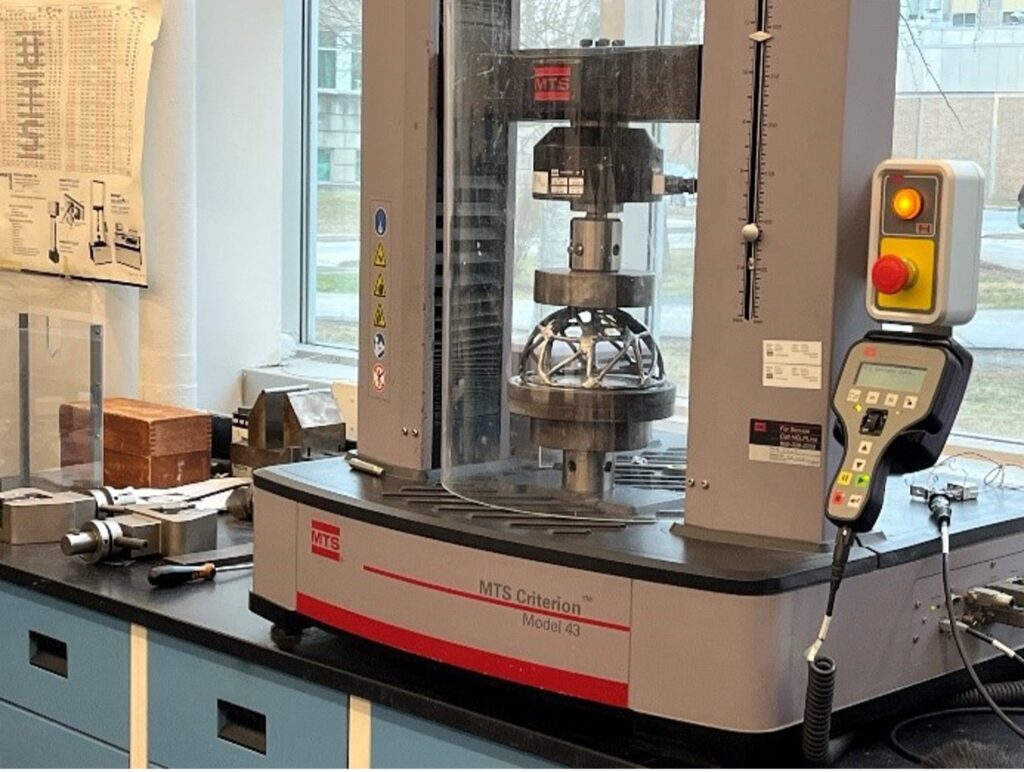
In a Resistance challenge, teams competed to choose the right combination of materials to meet certain electrical resistance requirements. “Choosing the right material for a specific design requirement is one of the main skills that any materials engineer has in their toolbox,” explains Lee. Teams were given a multimeter and certain resistance goals and were tasked with choosing the right combination and orientation of wires to meet these requirements.
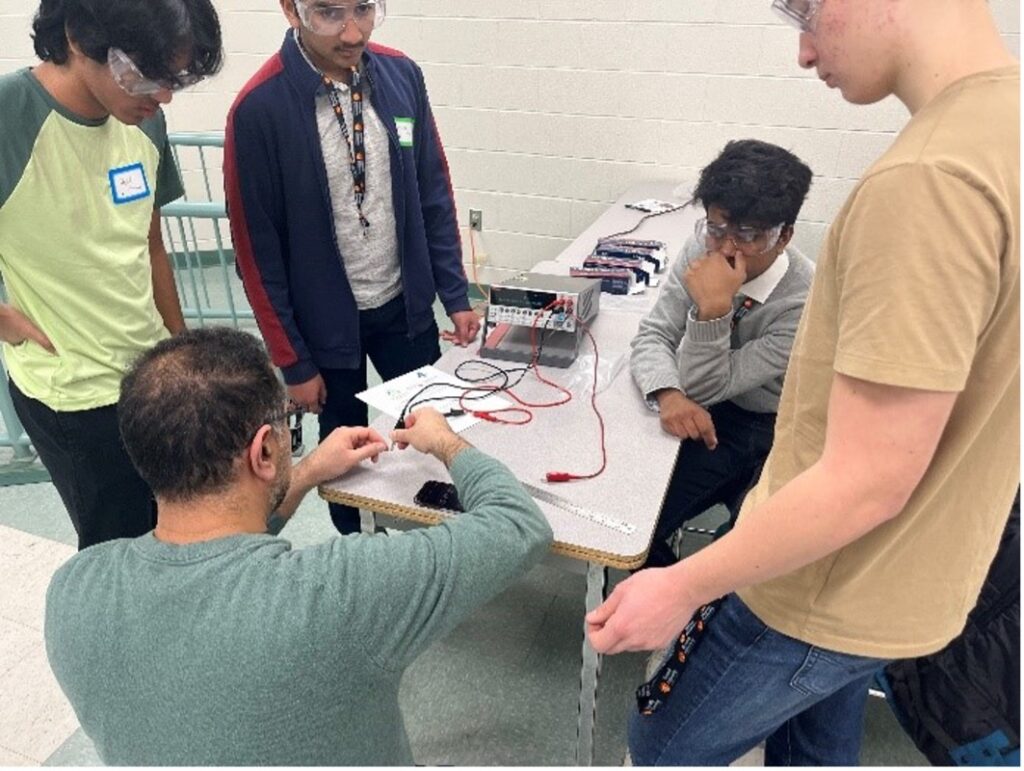
A Microscopy challenge tested competitors to find microscale logos etched into pennies. “The properties of materials rely on us understanding their corresponding structure,” explains Lee. “This structure extends all the way from the milli to micro to even the atomic scale.”
Teams were able to use optical microscopes to investigate pennies that had microscale patterns etched on to them using Focus Ion Beam (FIB) Microscopy. Students visited the Canadian Center for Electron Microscopy (CCEM), one of the top electron microscopy facilities in North America located on campus, to learn how materials scientists and engineers use high-powered microscopes to understand the structure and properties of materials on the nano-to-atomic scale.
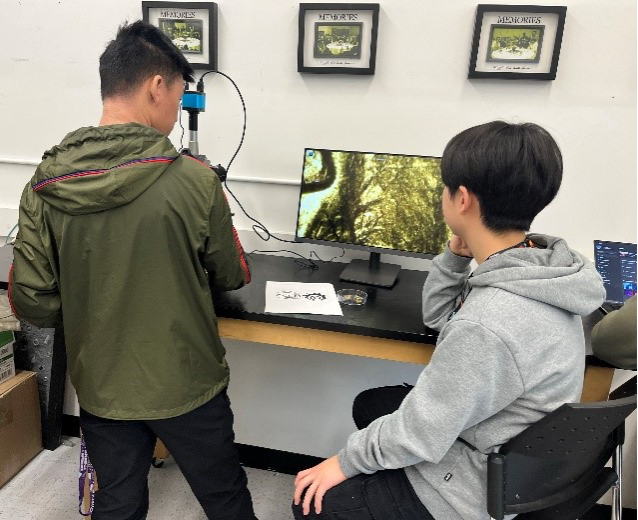
Rounding out the quartet of challenges was Materials Trivia, where students’ knowledge was tested with questions related to material composition.
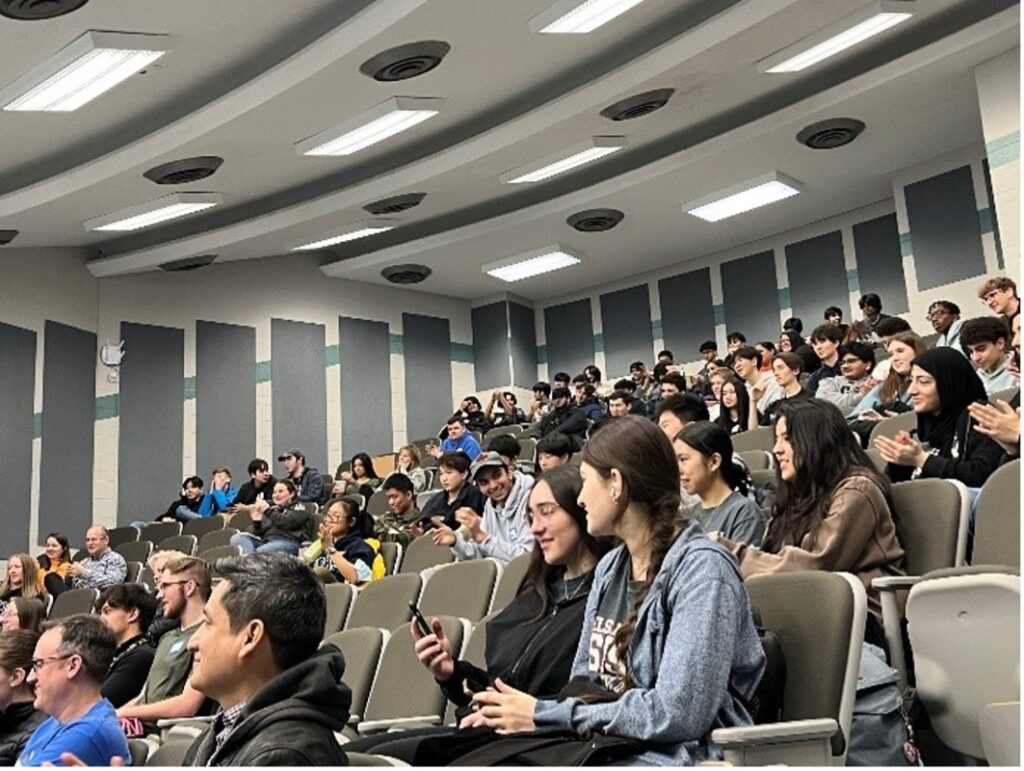
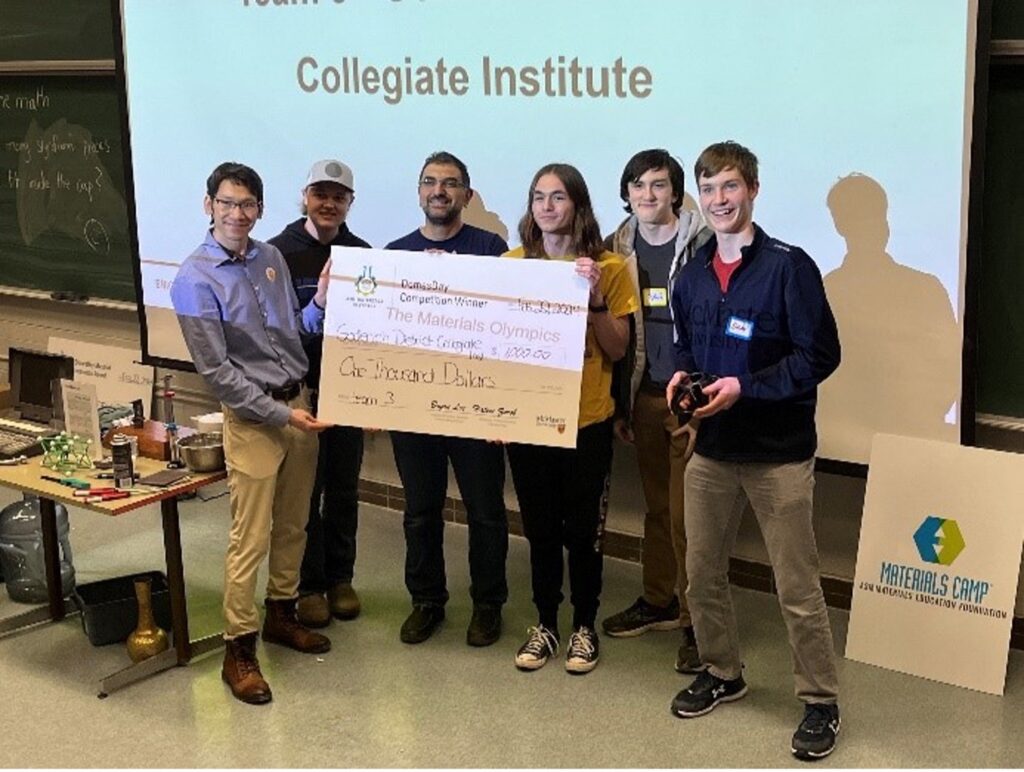
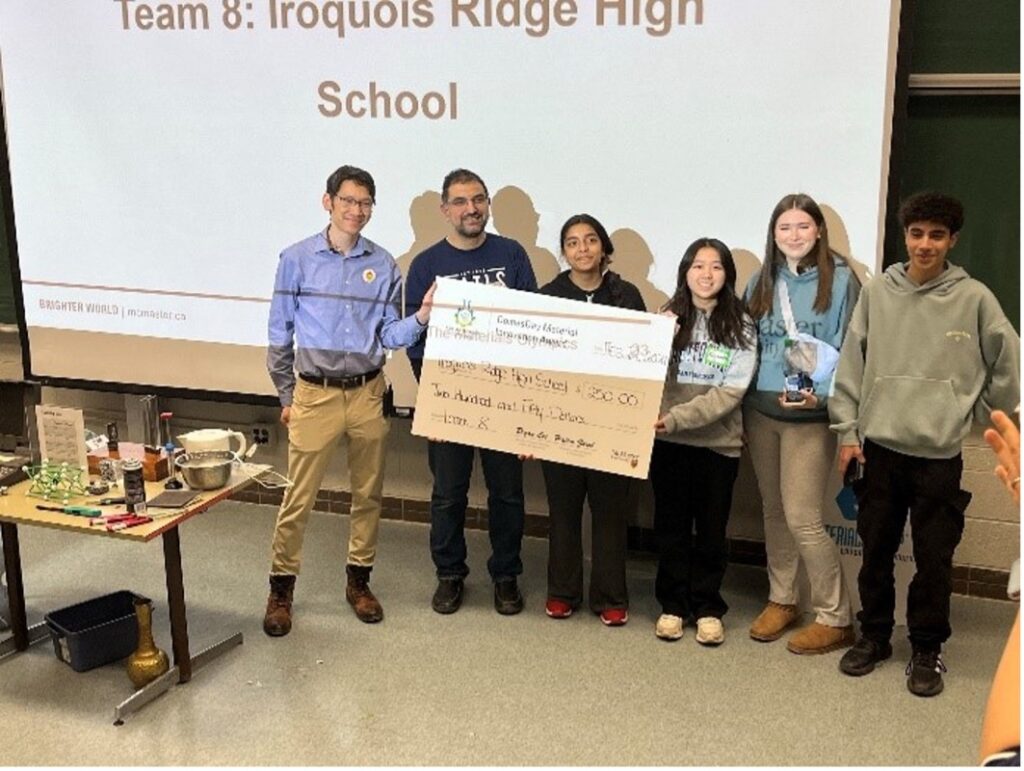
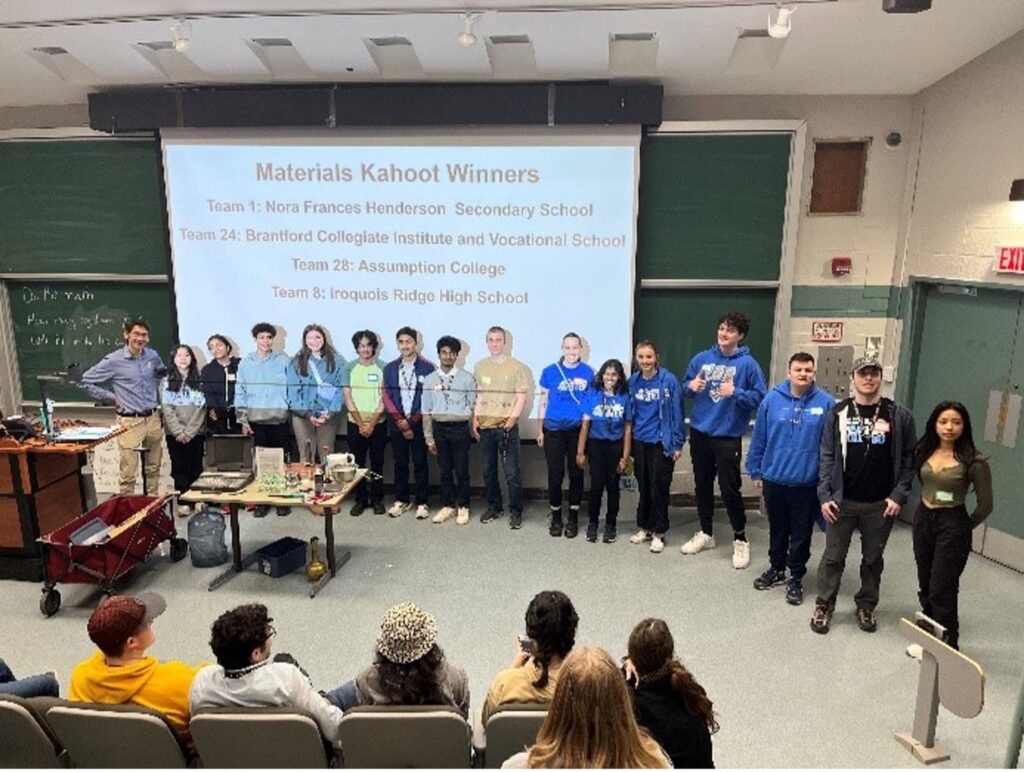
A victory for materials engineering
“Observing high school students actively engaged and brimming with excitement about materials throughout the day of competition was truly rewarding,” says Zurob. “In a field teeming with possibilities critical to numerous industries such as manufacturing, infrastructure, technology, and biomedical, it’s imperative that we find innovative ways to connect aspiring materials engineers with the field of study.”
Learn more about Materials Science and Engineering at McMaster and check out the full list of winning Material Olympians below.
DomesDay Overall Winner: Goderich District Collegiate Institute
DomesDay Material Innovativeness Winner: Iroquois Ridge High School
Resistance Challenge Winner: Elsie MacGill Secondary School
Microscopy Challenge Winner: Elsie MacGill Secondary School
Materials Trivia Winners: Nora Frances Henderson Secondary School, Brantford Collegiate Institute and Vocational School, Assumption College, Iroquois Ridge High School
